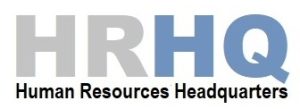Over the years I’ve written a number of posts about the performance-based interviewing process I’ve been using for the past 40 years. I first developed this process by benchmarking how the best managers evaluated and hired the best candidates. After a few years of trial-and-error it was very clear that most interviewers were assessing the wrong things. Here are some of the worst and best predictors of on-the-job performance that I discovered.
The Worst Predictors:
- All of the skills, experiences, academic requirements and competencies listed on the job description. Reason: They define average performance! Consider that possessing them eliminates all the high achievers who get assigned the toughest technical and managerial projects long before their peers.
- The person’s first impression – good or bad – is a terrible predictor of on-the-job success. For proof consider all of the people with good first impressions who aren’t top performers and all of those with average first impressions who are.
- Any pre-assessment test like DISC, PI, Calipers, MBTI, Kolbe and our own BEST test that emphasize behavioral and personality traits. Not only are they terrible predictors of on-the-job performance, passive candidates refuse to take them before they become serious about the job. So using them for screening people puts a ceiling on the quality of the people even being considered.
The Best Predictors:
- The person has a track record of comparable accomplishments in terms of team size, impact and complexity.
- The person has a track record of being assigned to, or volunteering for, difficult and/or stretch projects.
- The person proactively helped coach and help others become better – including and especially peers.
Given this, here’s how to both attract stronger candidates and better predict their on-the-job performance.
As you go through the person’s resume job by job, here are some things to look for:
- Rapid progression and/or formal recognition. At each company ask about promotions, special recognition, bonuses, title or job changes and why the person was assigned to different projects. Lack of any of these, or a series of short tenures at multiple companies, should raise the caution flag.
- Job-hopper or career-focused. Ask candidates why they changed jobs and if they achieved the objective as a result of the change. Job hopping syndrome is quickly revealed when a person takes jobs more for what he/she gets on the start date (title, location, compensation and company name) rather than what he/she will be doing, learning and becoming.
- The growth rate of their project teams. For each major job, ask candidates to describe the teams they’ve been assigned to or were managing. If the teams are multifunctional and expanding in size, scope, impact and influence, especially at different companies, you can rest assured the person has exceptional team skills whether he/she is quiet or not or makes a good first impression or not.
- Assigned to lead big projects. It’s a strong clue the person has strong management skills if the person has been promoted into bigger jobs over bigger groups as a result of previous successes. If so, ask about the quality of the people on each team and how the team was built and developed.
- Clearly a top 25% person. Ask people what type of projects they were assigned within 6-12 months after starting a new job. Those with real talent get assigned difficult projects ahead of their more experienced peers.
Too many interviewers get quickly seduced by the four “A”s. This is someone who is articulate, attractive, assertive and affable. None of these first impression-related factors predict on-the-job performance. When starting the work history review it’s important to put your reaction to the person’s first impression – strong or weak – into the parking lot for at least 30 minutes. Then look for the five clues described above. In 30 minutes you’ll know if the candidate should be seriously considered for your job.
Permission has been granted from The Adler Group and Lou Adler, author of Hire With Your Head and The Essential Guide to Hiring & Getting Hired, to reprint this article.
About the author
Lou Adler is the CEO and founder of The Adler Group – a training and search firm helping companies implement Performance-based Hiring℠. Adler is the author of the Amazon top-10 best-seller, Hire With Your Head (John Wiley & Sons, 3rd Edition, 2007). His most recent book has just been published, The Essential Guide for Hiring & Getting Hired (Workbench, 2013). He is also the author of the award-winning Nightingale-Conant audio program, Talent Rules! Using Performance-based Hiring to Build Great Teams (2007). Adler holds an MBA from the University of California in Los Angeles and a BS in Mechanical Engineering from Clarkson University in New York.











